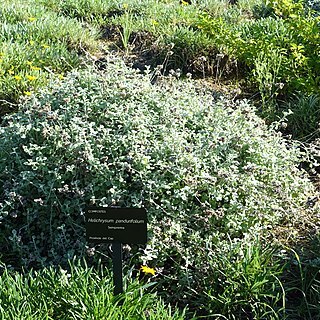Loosely branched, soft-wooded shrub. Stems thinly grey-woolly, leafy, becoming distantly bracteate below inflorescence. Leaves 8-16 x 8-10 mm, margins crisped-undulate, both sides grey-woolly. Capitula broadly campanulate, 5-8 x 6-14 mm, few-many; involucral bracts in 6 series, ± crisped, opaque milk-white, sometimes tinged with rose. Flowers 12-39, yellow. Flowering time Sept.-Jan. Pappus of bristles, with bases cohering strongly by patent cilia. Cypselae 0.75 mm long, barrel-shaped.
Straggling, grey-woolly shrublet or shrub. Leaves ovate, pseudopetiolate and auriculate-clasping below, crisped, grey-woolly. Flower heads discoid, few to many in terminal corymbs on peduncle-like branches, campanulate, creamy, ± 5-8 x 6-10 mm, florets 12-40, ovary glabrous.
A shrub. It is loosely branched and softly woody with long slender branches. The leaves are 8-16 mm long by 8-10 mm wide. They are broadly oval. There are 12-39 yellow flowers.

